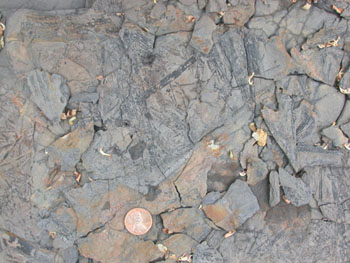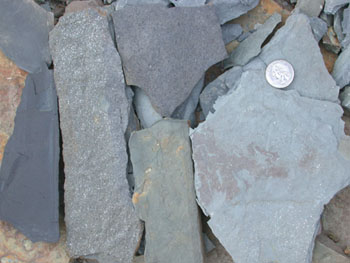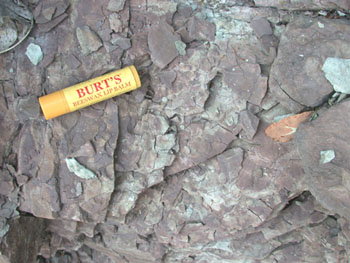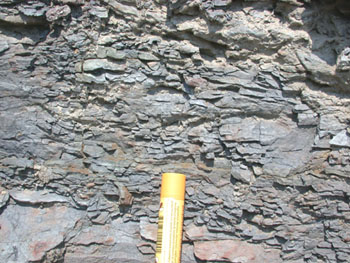Mudstone and Shale
| Mudstones and shales are made of silt- and clay-sized particles that are too small to see. The only difference between mudstone and shale is that mudstones break into blocky pieces whereas shales break into thin chips with roughly parallel tops and bottoms. Both are made of ancient mud.
From the point of view of understanding the ancient conditions of sediment deposition, it is more useful to subdivide mud rocks into siltstone and claystone. We cannot see the difference between these rocks, but it turns out that siltstone feels gritty when nibbled or rubbed against a tooth whereas claystones feel smooth. If you find a claystone, you know that it accumulated in a very quiet environment with almost still water.
|
|





